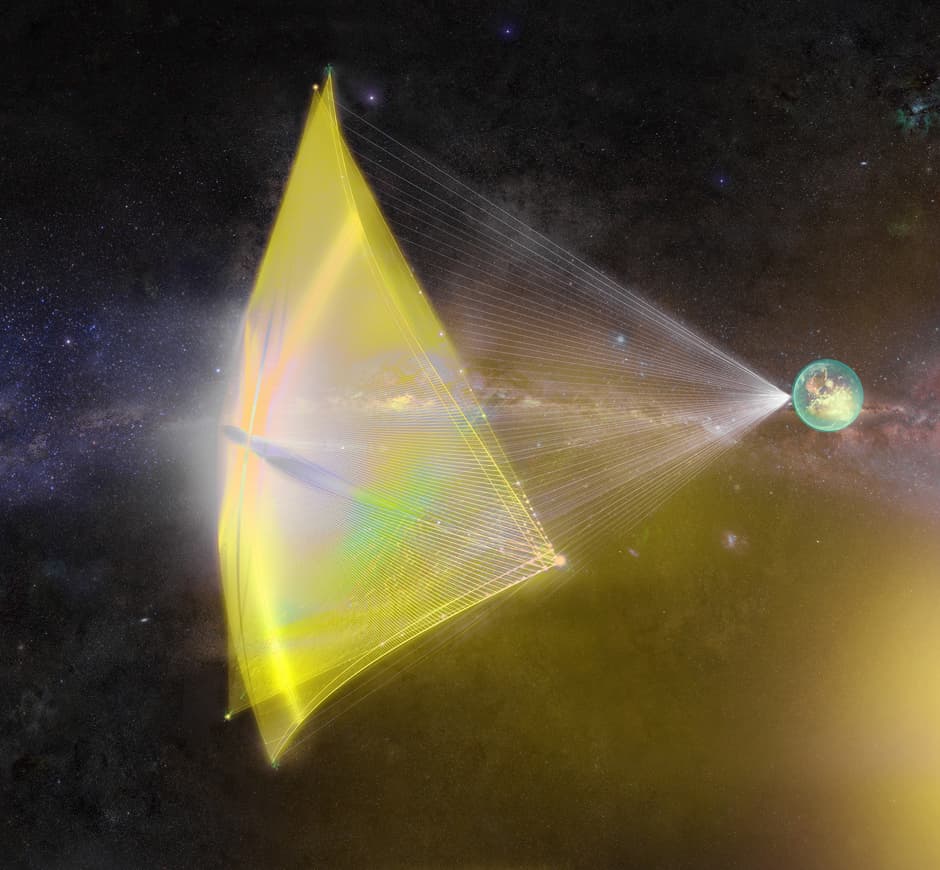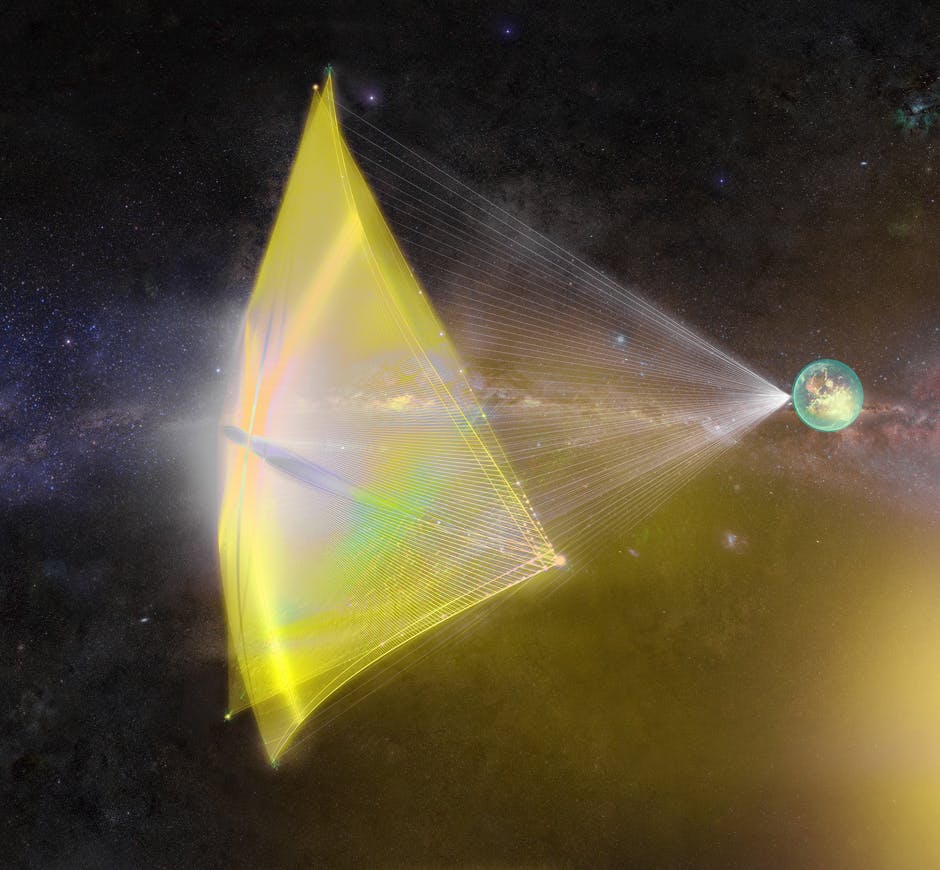
An artistic impression of Breakthrough Starshot flying away from Earth at 0.2c. Credit: Breakthrough Starshot Initiative
Interstellar travel is about to go from a Sci-fi idea to physical reality, but the jump comes with a series of considerations that fiction writers don’t have to consider.
This could work as an introduction for the apparent lack of toilets in Star Trek, but it’s actually something else. You see, space is not as empty as one might think. Within galaxies, there is a large quantity of small complex molecules which are commonly called dust, although it has a consistency more similar to smoke.
Usually, dust is not a major problem for probes, humans, and spacecraft, but if we were to send something at a considerable velocity, dust starts to matter.
Canadian and American Scientists wrote a paper on how project Breakthrough Starshot is going to be affected by dust. If you haven’t heard about Starshot, it is the ambitious plan to send a micro spacecraft (100 grams at most) to Alpha Centauri within 20 years. This would be possible by accelerating the craft to 20 percent the speed of light by shooting a powerful laser at a large solar sail in order to propel the craft through space.
The fact we have the technology to do (or almost do) this is amazing and a dream come true. Obviously, the dream has to face reality. If the craft moves at one-fifth of the speed of light, that’s the velocity at which the dust hits the sail and craft.
The researchers have calculated that by the time it reaches its destination, large gas atoms might have eroded about 0.1 mm of its surface and dust could eat almost 0.5 mm of it. It might seem small, but for such a small craft it is huge. Also, this is the effect of having less than one milligram of hydrogen per cubic centimeter on the path to our neighbouring system.
Larger dust molecules and the temperature of the interstellar medium won’t affect the spacecraft much, so the researchers were able to suggest designs which would help minimise such effects. A graphite-covered needle-shaped craft would be less affected by the interstellar material between Earth and the Alpha Centauri System because of its smaller cross-section.
Although the paper is very technical, it is brilliant to read! We are actually looking at the subtleties of interstellar travel! I hear Proxima Centauri could have a habitable planet too, so we better get our act together and go there as fast as we can!
PAPER: Hoang et al. The interaction of relativistic spacecrafts with the interstellar medium arXiv:1608.05284
